Sri Lanka
Things to DO
Negombo
Negombo is a modest beach town located just 10 km from Bandaranaike International Airport.
With a stash of decent hotels and restaurants to suit all pockets, a friendly local community, an interesting old quater and a reasonable
(although some what polluted) beach, Negombo is a much easier place to find your Sri Lankan feet than Colombo.
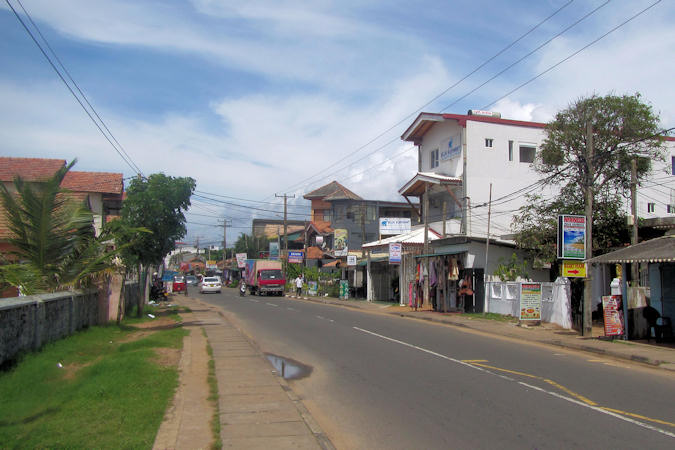 |
|||||
The Dutch captured the town from the Portuguese in 1640, lost it and then captured it again in 1644. The British then took it from them
in 1796 without a struggle.
Even though it could never compete in a beauty contest again many Sri Lankan beaches, Negombo's Beach, which streches north from
the old town right along the hotel strip before fading into a palm-tree distance, is pleasant enough and makes for a good sunset stroll.
Foreign tourists can normally access the beach in front of most big hotels even if you're not staying (act rich and confident),
but for a more colourful (and noisier) scene join the locals at what is known as Negombo Beach Park.
Each day, fishers take their oruvas (outrigger canoes) and go out in search of the fish for which Negombo is famous.
They're a fine sight as they sweep home into the lagoon after a fishing trip.
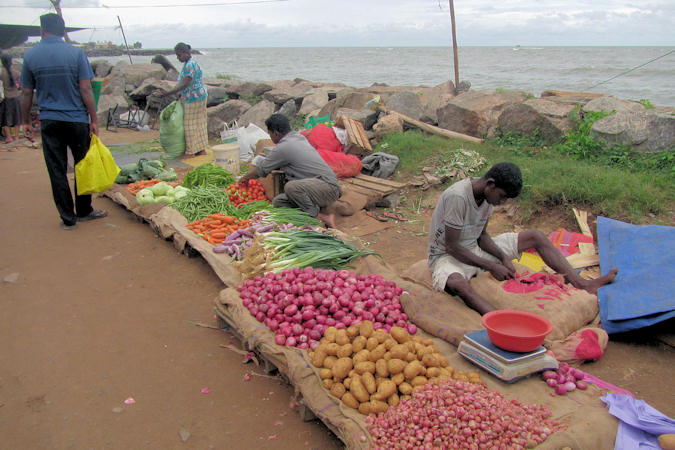 |
|||||
Fish auctions on the beach, drying fish on the sand and sales
at the fish market near the fort are a slippery and smelly affair, but one that's well worth it.
The catch is not all from the open sea; Negombo is the northern end of a lagoon that is renowned for its lobsters, crabs and prawns.
Church Of St. Sebastian
The amazing architecture of the Church of St. Sebastian unwittingly attracts the attention of any tourist, especially as it is located
very near to tourist area.
High spires and facade look amazing. Before building a large area where the evenings are going to believers during the evening service.
Inside is calm and you can relax a bit, sitting on the bench. The window openings on the inside decorated with colorful frescoes, the
altar is decorated pretty simple.
The right of the building recreated the Calvary with Jesus on the cross.
Overall, the place is worth a visit, and miss it during a visit to Negombo is simply impossible.
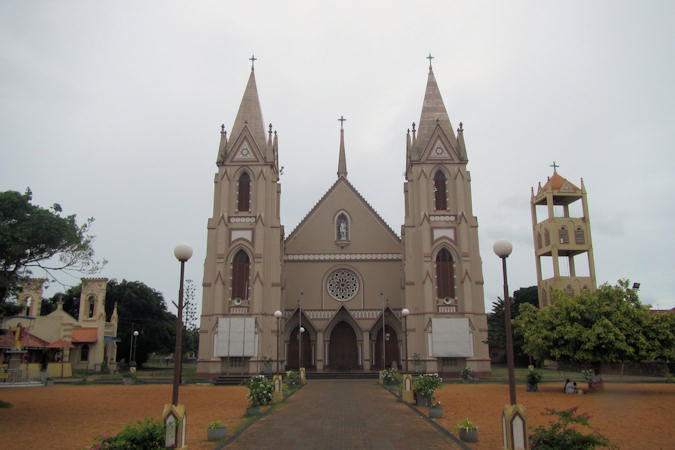 |
|||||
Sri Muthu Mari Amman Temple
A Hindu temple dedicated to the mother goddess.
Almost everywhere in Sri Lanka you can meet similar temples, with a mention in the title – "Mariamman" or "Amman" meaning "mother." Locals
believe that she blesses the offspring, a successful marriage and cures of some diseases.
Outside the temple looks very modest, even plain, without specific tower, crowning the main entrance, and the interior somewhat gloomy.
Sri Sithi Vinayagar Temple
About 100 m from the previous temple is another one dedicated to a different Hindu God Ganesha – God of wisdom and prosperity.
This is a beautiful and bright Church with a low tower, decorated with statues and bas-reliefs.
Around the perimeter of the temple there are several separate pedestals with statues of different deities.
Kitulgala
Kitulgala is a small town in the west of Sri Lanka.
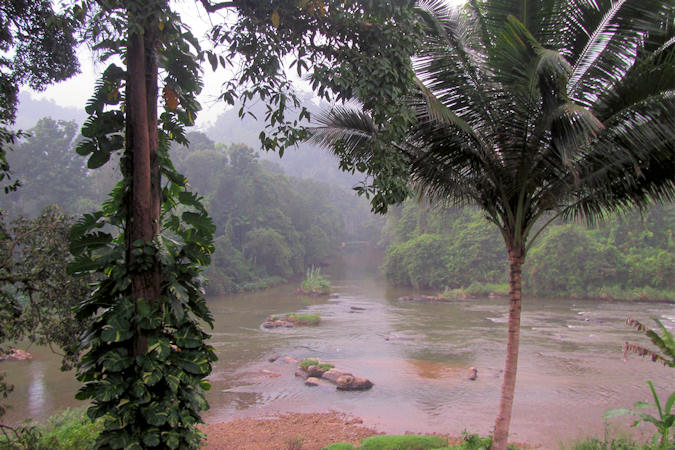 |
|||||
It is in the wet zone rain forest, which gets two monsoons each year, and is one of the wettest places in the country. Nevertheless, it
comes alive in the first three months of the year, especially in February, the driest month.
The Academy Award-winning The Bridge on the River Kwai was filmed on the Kelani River near Kitulgala, although nothing remains now
except the concrete foundations for the bridge (and, supposedly, the submerged train cars that plunged into the river in the climactic
scene).
Kitulgala is also a base for Wite-water Rafting, which starts a few kilometres upstream and also popular as a location for adventure
based training programs.
The area is famous for Birdwatching - 23 of Sri Lanka's 27 endemic bird species, such as Sri Lanka Spurfowl, Spot-winged Thrush and
Layard's Parakeet inhabit the surrounding forest.
Sinharaja Forest Reserve
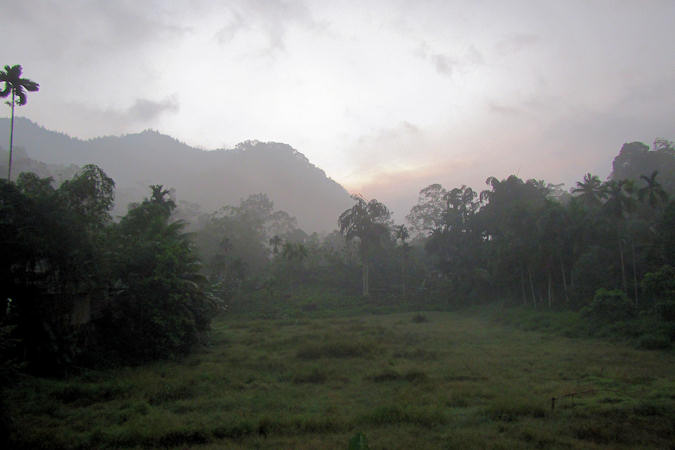 |
|||||
The largest lowland rainforest in Sri Lanka, Sinharaje Forest Reserve is an abundant, biodiverse habitat, bordered by rivers and
rich in wildlife, including rare mammals and many endemic birds.
Unlike most Sri Lankan national parks, access to the forest is only on foot, accompanied by a ranger or guide. Most visitors base themselves
in the nearby settlements of Deniyaya or Kudawa, where entrance tickets are sold at the main Forest Department offices.
Because the forest is so dense, wildlife-spotting is not as easy here as it is in many other Sri Lankan reserves and parks. A good guide
certainly helps.
On most days, the jungle is shrouded by copious rain clouds, which replenish its deep soils and balance water resources for much of
southwestern Sri Lanka.
Regognising its importance to the island's ecosystem, Unesco declared the Sinharaja Forest Reserve a World Heritage Site in 1989
Udawalawe National Park
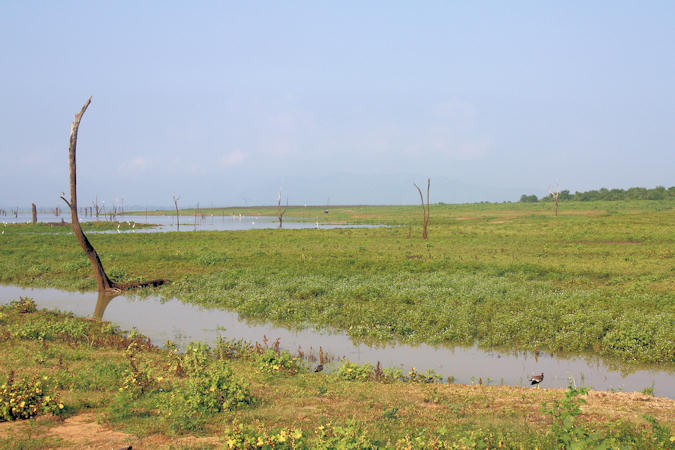 |
|||||
The Udawalawe National Park is located at the borders of Uva and Sabaragamuwa provinces in Sri Lanka. The main purpose of having
a national park was to provide a sanctuary to the wild animals that lost their habitat due to the construction of the Udawalawe
Reservoir on the Walawe River.
This reserve had been built in the year 1972 and it covers an area of 30.821 hectares. It is a popular destination among the tourists and it
is the 3rd most visited place in entire Sri Lanka.
Udawalawe is not only famous for the Sri Lankan Elephants but also for other animals like Sambar Deer, Wild Buffalo
(although most buffalo yuo'll see in the park are domesticated) mongoose, jackals, water monitor lizards, lots of crocodiles, sloth bears
and the occasional leopard.
There are 30 varieties of snakes and a wealth of birdlife - 210 species al last count.
Mirissa
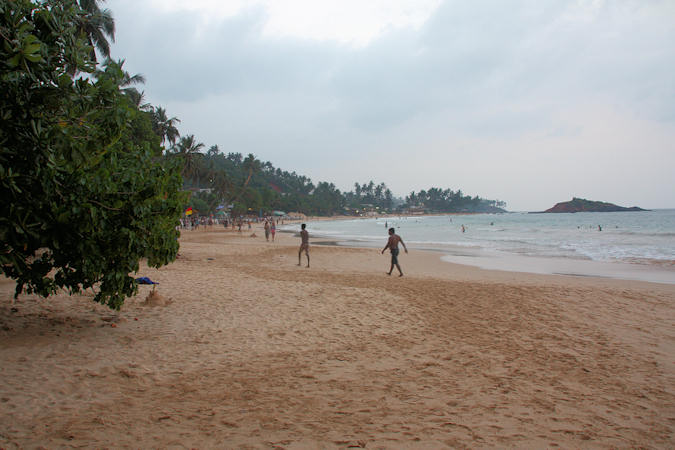 |
|||||
Mirissa, a small town on Sri Lanka’s south coast, is a common stop on traveller’s itineraries.
Mirissa beach stretches far along the coast and is the perfect place to soak up sun for a day or two. A number of restaurants and bars back
onto the beach, so there are plenty of places to watch sunset and enjoy a drink or two come nightfall.
The Mirissa Fisheries Harbour comes alive every morning, with the fisherman striving to sell their catch to numerous retailers
and the purchasing staff of many hotels and restaurants in the area.
The main attraction of the town itself is the numerous whale watching tours on offer – as it’s one of the best places in the world to
spot Blue Whales.
You can also meet pods of Dolphins, as they playfully somersault and dance on the ocean waves. There’s also a good chance of seeing
Flying Fish, Turtle, Manta Rays and even Sharks.
Tissamaharama
It used to be the capital of the Sinhalese Kingdom of Ruhuna as early as the 3rd century B.C. Only few buildings from that period
can still be seen today. The large artificial Tissa Wewa lake, which was a part of a sophisticated irrigation system, also dates from that
time.
Today, the town mainly serves as a starting point for visits to the nearby Yala and Bundala National Park.
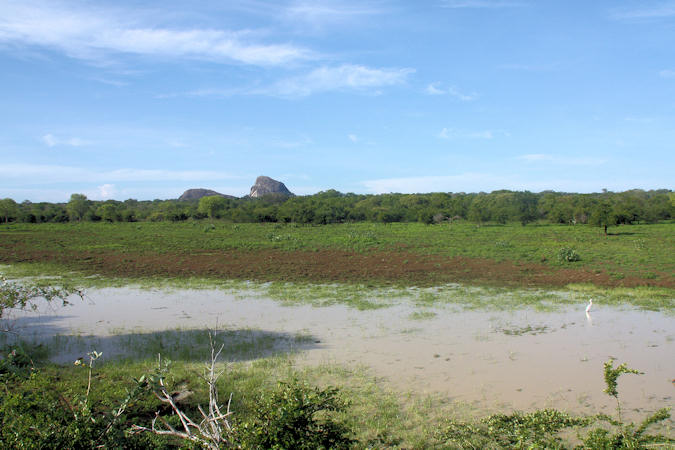 |
|||||
Yala National Park
The gateway to Yala National Park is Tissamaharama.
A 20 km drive via Kirinda takes the visitors to the entrance to the park at Palatupana.
The park that consists of five blocks is the most visited and second largest national park in Sri Lanka. Though Yala spreads over an area of
1.260 square kilometers, only one fifth of the area is open to the visitors. Four-fifths of the park is a strictly designated Natural
Reserve.
It's very rich in wildlife and you're virtually certain to encounter elephants, crocodiles, buffaloes and monkey's.
Yala National Park is rich in birdlife and around 130 species have been recorded, among which are eagles, flamingos, pelicans,
spoonbill, darter and hornbills.
Plan your trip carefully however - such is Yala's appeal that the main tracks and vieuwing spots can be crowded.
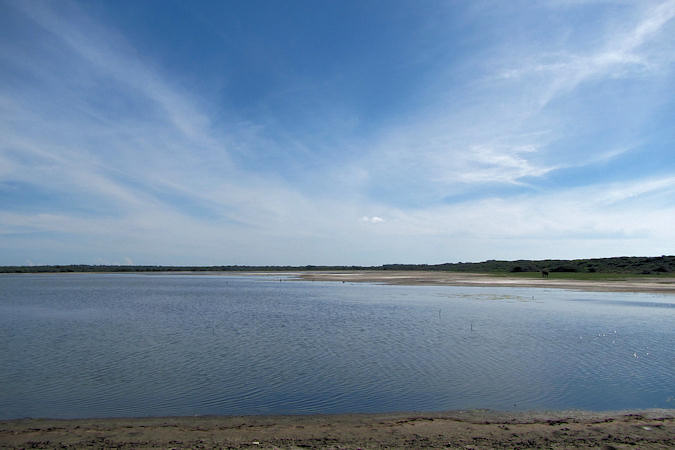 |
|||||
Bundala National Park
Bundala is a fantastic maze of waterwauys, lagoons and dunes that glitter like gold in the dying evening sun.
This wonderland provides a home to thousands of coulorful birds ranging from diminutive littel bee-eaters to grotesque open-billed storks.
It is a wetland sanctuary of such importance that it has been recognised under the Ramsar Convention on Wetlands.
The park shelters almost 200 species of birds within its 62-sq-km, wih many journeying out of Sibiria, arriving between August and April.
Many big mammals are also present, including Elephants, Monkey's, Wild Boar and Mongoose
Bundala is 18 km from Tissamahrama; there's no public transport inside the park